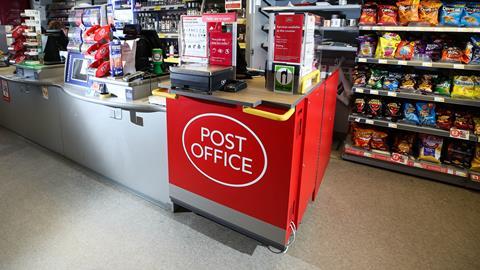CJ Lang dealt the Post Office a blow earlier this month with its decision to scrap the counter service in 31 company-owned stores. The business has said little about its reasons, but it is unlikely to be alone in no longer finding it “viable” to offer the service.
According to NFRN president Stuart Reddish, other local convenience stores are questioning its viability amid a new pay structure, which is set to create “winners and losers” from April next year.
So what’s going on?
The controversial changes actually stem from the Post Office’s bid to make itself a more attractive proposition to convenience stores. At the time of CEO Nick Read’s Big Interview with The Grocer last autumn, the sector was seen as a crucial part of its expansion, while flagship High Street standalone stores were to become a thing of the past.
As part of its bid to woo busy c-store retailers, the Post Office pledged to create a more nimble proposition and to work far more closely with postmasters, not least to dispel some of the distrust borne of the devastating Horizon scandal.
One of its collaborative measures has been to consult with almost 8,000 postmasters on a one-to-one basis about what the new pay structure – part of the revamped Mails Distribution Agreement – could mean for them.
One of the most controversial elements of the agreement is that postmasters will receive a percentage of the value for every stamp, packet, parcel, or large letter they sell, rather than a fixed fee.
In effect, postmasters will be working on commission. The more you sell, the more you make. It will also allow the postmasters to move in line with Royal Mail price increases, which they can’t at present.
The National Federation of Subpostmasters says 86% will benefit from the new structure, according to Post Office modelling projections. “Given the lengths postmasters have gone to through the pandemic of the last year and a bit, this should be their reward for that dedication to the Post Office and their communities,” says NFSP CEO Calum Greenhow.
But let’s not forget 14% are “losers”. In the real world, this equates to a whopping 1,600 unhappy postmasters.
That’s because, under the previous fixed fee system, they were paid similar amounts for large letters and parcels, even though the cost for a parcel is “much greater”. So postmasters sending a higher proportion of letters will now lose out.
“Naturally those who are in a situation who are losing out and, understandably so, are very concerned through no fault of their own,” says Greenhow. “We’re working with the Post Office to protect those who could potentially lose out and bring them in a neutral position so that they’re able to protect their business.”
It’s something the Post Office will have to consider carefully. Because Read’s expansion plans for the convenience sector are at risk of going awry if it doesn’t.
Since lockdown restrictions began easing a few months ago, few inroads have been made by way of expansion. Just six Spar retailers have given the go-ahead to put a Post Office sign above their door – a number that is dwarfed by CJ Lang’s exit.
So, as negotiations continue, the Post Office will need to work out how to stop a mass exodus from the 14% who will lose out under this deal.




















No comments yet